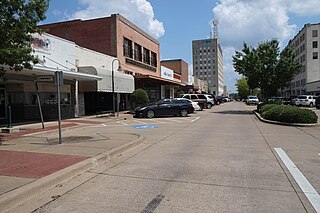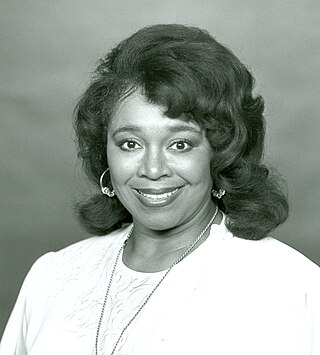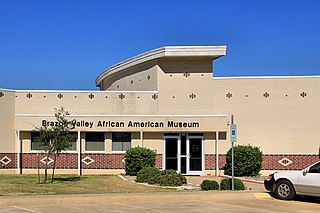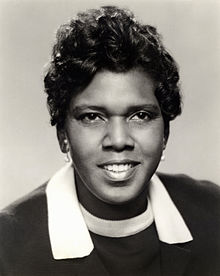
Juneteenth is a federal holiday in the United States commemorating the ending of slavery in the United States. Its name is a portmanteau of the words "June" and "nineteenth", as it is celebrated on the anniversary of June 19, 1865, when as the American Civil War was ending, Major General Gordon Granger ordered the final enforcement of the Emancipation Proclamation in Texas. Originating in Galveston, Juneteenth has since been observed annually in various parts of the United States, often broadly celebrating African-American culture.

McComb is a city in Pike County, Mississippi, United States. The city is approximately 80 miles (130 km) south of Jackson. As of the 2010 census, the city had a total population of 12,790. It is the principal city of the McComb, Mississippi Micropolitan Statistical Area.

Longview is a city in and county seat of Gregg County, Texas, United States. Longview is located in East Texas, where Interstate 20 and U.S. highways 80 and 259 converge just north of the Sabine River. According to the 2020 U.S. census, the city had a population of 81,638. Longview is the principal city of the Longview metropolitan statistical area, comprising Gregg, Upshur, and Rusk counties. The population of the metropolitan area as of 2021 census estimates was 287,858.

Barbara Charline Jordan was an American lawyer, educator, and politician. A Democrat, she was the first African American elected to the Texas Senate after Reconstruction, the first Southern African-American woman elected to the United States House of Representatives, and one of the first two African Americans elected to the U.S. House from the former Confederacy since 1901, alongside Andrew Young of Georgia.

Texas Southern University is a public historically black university in Houston, Texas. The university is one of the largest and most comprehensive historically black college or universities in the United States with nearly 8,000 students enrolled and over 100 academic programs. The university is a member school of the Thurgood Marshall College Fund and it is accredited by the Southern Association of Colleges and Schools. It is classified among "R2: Doctoral Universities – High research activity".

Barbara-Rose Collins was an American politician from the U.S. state of Michigan and the first black woman from Michigan to be elected to Congress.

Leimert Park is a neighborhood in the South Los Angeles region of Los Angeles, California.

Huston–Tillotson University (HT) is a private historically black university in Austin, Texas. Established in 1875, Huston–Tillotson University was the first institution of higher learning in Austin. The university is affiliated with the United Methodist Church, the United Church of Christ, and the United Negro College Fund. Huston–Tillotson University awards bachelor's degrees in business, education, the humanities, natural sciences, social sciences, science, and technology and a master's degree in educational leadership. The university also offers alternative teacher certification and academic programs for undergraduates interested in pursuing post-graduate degrees in law and medicine.
Austin Independent School District (AISD) is a school district based in the city of Austin, Texas, United States. Established in 1881, the district serves most of the City of Austin, the neighboring municipalities of Sunset Valley and San Leanna, and unincorporated areas in Travis County. The district operates 116 schools including 78 elementary schools, 19 middle schools, and 17 high schools. As of 2013, AISD covers 54.1% of the City of Austin by area and serves 73.5% of its residents.

The George Washington Carver Museum and Cultural Center is a museum and cultural center in east Austin, Texas, housed in the former George Washington Carver branch of the Austin Public Library. Named in honor of George Washington Carver, the facility has been listed on the National Register of Historic Places since 2005.

The Southgate–Lewis House is located one mile east of the Texas State Capitol in Austin, Texas, at 1501 East 12th Street. The house was constructed in 1888, and now stands as an African-American historical landmark. It is also a repository for African-American History and Culture in the region of east Austin, which historically became an African-American neighborhood. The City of Austin has now declared this region to be "Austin's Black Cultural District." The Southgate–Lewis House is located in the center of the "African American Cultural Heritage District".
African-American neighborhoods or black neighborhoods are types of ethnic enclaves found in many cities in the United States. Generally, an African American neighborhood is one where the majority of the people who live there are African American. Some of the earliest African-American neighborhoods were in New Orleans, Mobile, Atlanta, and other cities throughout the American South, as well as in New York City. In 1830, there were 14,000 "Free negroes" living in New York City.

African American Texans or Black Texans are residents of the state of Texas who are of African ancestry and people that have origins as African-American slaves. African Americans formed a unique ethnic identity in Texas while facing the problems of societal and institutional discrimination as well as colorism for many years. The first person of African heritage to arrive in Texas was Estevanico, who came to Texas in 1528.

The African American population in Houston, Texas, has been a significant part of the city's community since its establishment. The Greater Houston area has the largest population of African Americans in Texas and west of the Mississippi River. Black Enterprise has referred to Houston as a Black mecca.

The African American population in San Antonio, Texas has been a significant part of the city's community since its founding. African Americans have been a part of the Greater San Antonio's history since the late 1800s. San Antonio ranks as the top Texas destination city for Black professionals.
The Dallas–Fort Worth metroplex has 1.2 million African-Americans, the 2nd-largest metro population of African-Americans in Texas.

The Texas African American History Memorial is an outdoor monument commemorating the impact of African Americans in Texas, installed on the Texas State Capitol grounds in Austin, Texas, United States. The memorial was sculpted by Ed Dwight and erected by the Texas African American History Memorial Foundation in 2016. It describes African American history from the 1500s to present, and includes depictions of Hendrick Arnold and Barbara Jordan, as well as Juneteenth, when African Americans were emancipated.

The 1928 Austin city plan was commissioned in 1927 by the City Council of Austin, Texas. It was developed by consulting firm Koch & Fowler, which presented the final proposal early the next year. The major recommendations of this city plan related to Austin's street plan, its zoning code, and the development of major industries and civic features, but it is most remembered for institutionalizing housing segregation by designating East Austin as the city's negro district.

Opal Lee is an American retired teacher, counselor, and activist in the movement to make Juneteenth a federally-recognized holiday. She is often described as the "grandmother of Juneteenth".

Anderson Stadium, also known as Yellow Jacket Stadium, is a historic football and track and field facility in East Austin, Texas. The stadium was built in 1953 as the football facility on what was then the campus of L.C. Anderson High School, Austin's only public high school open to African Americans under racial segregation. Closed in 1971 as part of a school integration plan and restored in the 1990s, Anderson Stadium was added to the National Register of Historic Places in 2022.




















